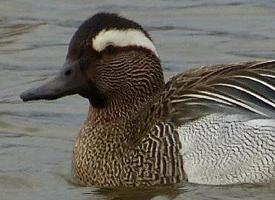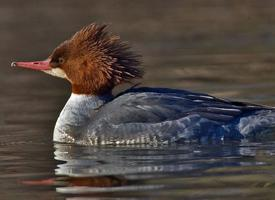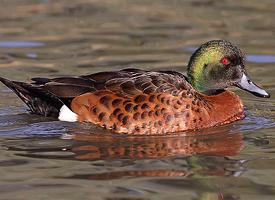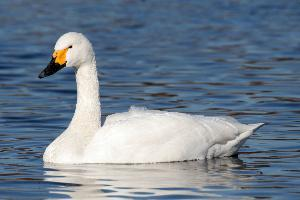
Stav ohrožení
| Neohrožen |
Popis zvířete
The Garganey (Spatula querquedula) is a small, striking dabbling duck that graces freshwater wetlands across parts of Europe, Asia, and Africa. As a migratory species, it showcases an impressive journey between its breeding and wintering grounds, navigating vast distances with precision. This bird is a part of the diverse Anatidae family, which includes ducks, geese, and swans, and is particularly notable for its unique appearance and behaviors.Measuring between 37 to 41 centimeters in length, with a wingspan of approximately 63 to 67 centimeters, the Garganey is smaller than many other ducks. Despite its modest size, it boasts a distinctive plumage that makes it easily identifiable among birdwatchers and enthusiasts. The male, especially during the breeding season, features a striking appearance with a bold brown head marked by a broad white crescent over the eye. Its breast is spotted gray, transitioning into a scalloped pattern across its flanks. The bird's back is a darker brown, while the wings have a conspicuous white speculum visible in flight. In contrast, the female and non-breeding males are more subdued in coloration, predominantly mottled brown, which provides excellent camouflage among reeds and vegetation.
One of the most fascinating aspects of the Garganey is its diet and foraging behavior. Primarily, it feeds by skimming the surface of the water or by up-ending, rarely diving, to forage on a variety of aquatic plants, seeds, and small invertebrates. This diet is crucial for its energy-intensive migratory lifestyle, which requires substantial reserves of fat.
The breeding habitat of the Garganey is shallow freshwater marshes, lakes, and flooded fields, often with dense vegetation that provides cover and nesting sites. They are solitary or loosely colonial nesters, with the female building a well-concealed nest on the ground, lined with plant material and down. The clutch usually consists of 7 to 11 eggs, which are incubated solely by the female for about three weeks. The precocial chicks are quick to leave the nest after hatching, entering the water to feed under the watchful eye of their mother.
Migration is a critical part of the Garganey's life cycle. As autumn approaches, they leave their breeding grounds in temperate and northern Eurasia, heading to winter in warmer regions of sub-Saharan Africa, the Indian subcontinent, and Southeast Asia. This journey is fraught with challenges, including navigating vast distances, avoiding predators, and finding suitable stopover sites to rest and refuel.
The Garganey's call is another characteristic feature, with the male producing a distinctive wheezy "whee-oo" sound during the breeding season, often while in flight. This call plays a crucial role in territory establishment and mate attraction.
Despite its widespread range, the Garganey faces threats from habitat loss and degradation, particularly due to wetland drainage, pollution, and disturbances at critical stopover sites along its migratory path. While currently listed as Least Concern by the IUCN, its populations are believed to be declining, highlighting the need for continued conservation efforts to protect this remarkable species and its habitats.
In summary, the Garganey is a small yet remarkable dabbling duck with a distinctive appearance, intriguing behaviors, and an impressive migratory journey that spans continents. Its presence enriches the biodiversity of wetlands across its range, underscoring the importance of conserving these critical habitats for future generations.
Podobná zvířata
Nové fotografie zvířat
Top 10 zvířat
- Chinese water dragon (Physignathus cocincinus)
- Galápagos tortoise (Geochelone nigra complex)
- Dolphin gull (Leucophaeus scoresbii)
- Japanese macaque (Macaca fuscata)
- Colombian red howler (Alouatta seniculus)
- Sea urchins (Echinoidea)
- Moustached guenon (Cercopithecus cephus)
- Diana monkey (Cercopithecus diana)
- Common reed warbler (Acrocephalus scirpaceus)
- Common house mosquito (Culex pipiens)


